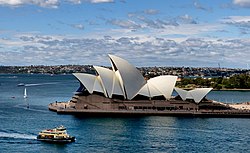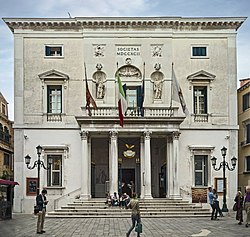Opera house


An opera house is a building where operas and ballets are performed. It is similar to a theatre.
The first opera houses were built in the 1630s in Italy, about thirty years after the first operas were written. Traditionally they have a stage where the action takes place and a proscenium archway with a curtain that can be drawn back when the performance begins. In front of the stage is an orchestra pit which is a little lower than the stage so that the audience can still see the stage. The audience sit in the auditorium which is often horse-shoe shaped. The downstairs seats are called “stalls”. Round the stalls there are two or three tiers (storeys) of boxes. Each box can seat a small number of people. At the top towards the back there is a balcony and often a gallery along the sides as well. Some seats in the gallery may have restricted view (it is not possible to see all of the stage).
Some of the most famous opera houses in the world are Teatro alla Scala (or “La Scala”) in Milan, the Royal Opera House in Covent Garden, London, the Metropolitan Opera House in New York, the War Memorial Opera house in San Francisco, the Bolshoi Theatre in Moscow and the Sydney Opera House in Sydney which is a very modern building.
Opera House Media
Teatro di San Carlo in Naples, the world's oldest working opera house.
The Sydney Opera House is one of the world's most recognisable opera houses and landmarks.
Opéra-Théâtre de Metz Métropole, built by benefactor Charles Louis Auguste Fouquet, duc de Belle-Isle during the 18th century; it is the oldest opera house working in France.
The Estates Theatre in Prague (Czech Republic) is the only theatre left standing where Mozart performed.
The Academy of Music in Philadelphia is the oldest opera house in the USA.
The Bayreuth Festspielhaus in Bayreuth (Germany) was built by Richard Wagner and dedicated solely to the performance of his stage works.
Teatro alla Scala in Milan, Italy
Berlin State Opera on Unter den Linden, Germany
Other websites
| Wikimedia Commons has media related to Lua error in Module:Commons_link at line 62: attempt to index field 'wikibase' (a nil value).. |









